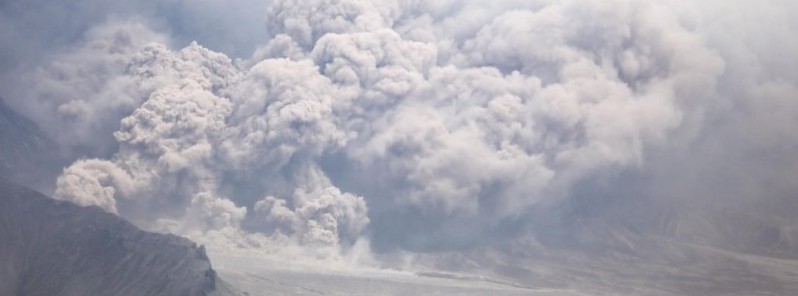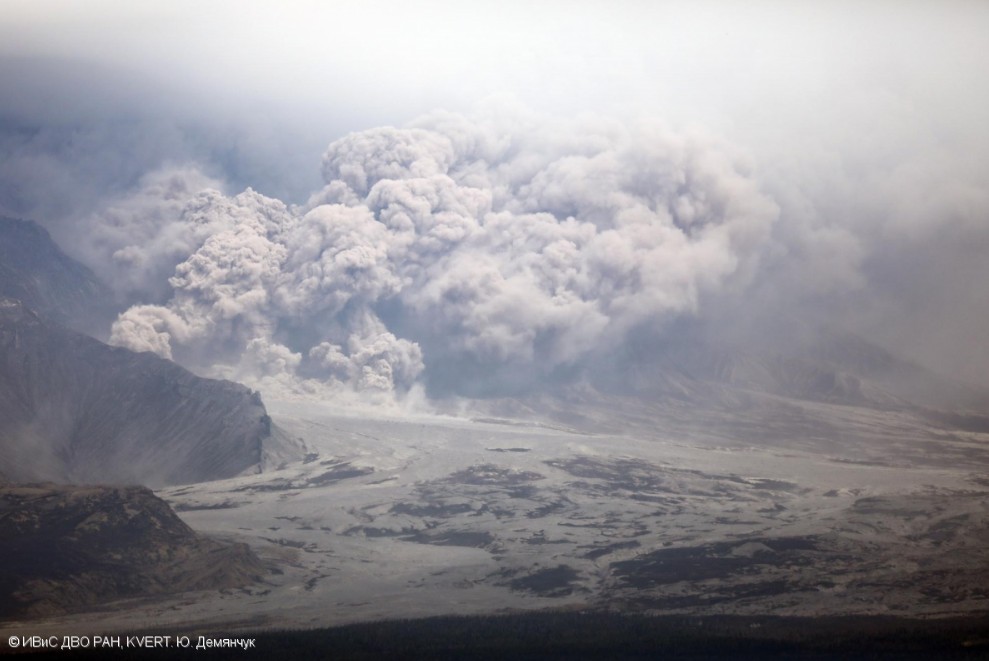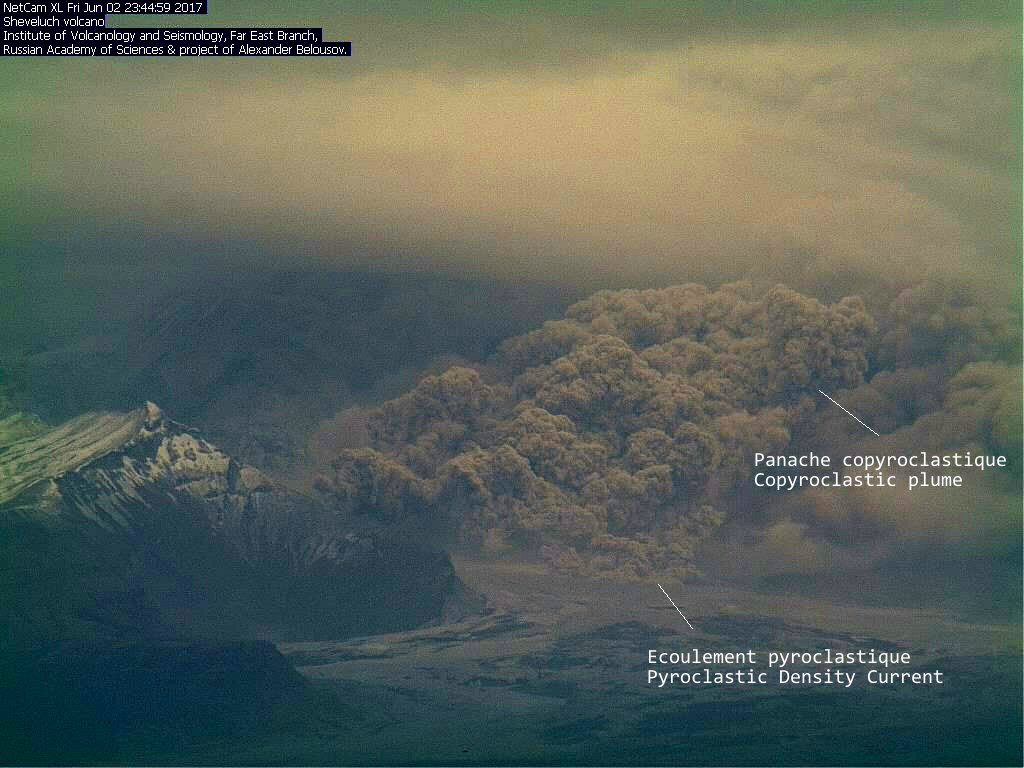Sheveluch ejects ash up to 10 km (33 000 feet) a.s.l., Russia

Russia's Sheveluch volcano erupted at 01:50 UTC on Wednesday, June 7, 2017, ejecting a plume of ash up to 10 km (33 000 feet) above sea level. The plume is extending to the southwest.
At 02:30 UTC, KVERT reported ash plume/cloud reached a distance of 23 km (14 miles) SW of the volcano. By 06:00 UTC, it was extending 150 km (93 miles) SSW.
"Explosive-extrusive eruption of the volcano continues," the agency said. "Ash explosions up to 8 – 10 km (26 200 – 32 800 feet) a.s.l. could occur at any time. Ongoing activity could affect international and low-flying aircraft."
The Aviation Color Code remains Orange.
Although one part of volcanic ash is obscured by meteorological cloud, it is continually observed on satellite imagery, Tokyo VAAC reported at 09:00 UTC.
Significant pyroclastic flows were descended the southern flank of the volcano during strong eruptions on June 2 and 3, 2017.

Pyroclastic flow – Sheveluch volcano – June 2/3 2017. Credit: Yu. Demyanchuk, IVS FEB RAS, KVERT

Credit: IVS FEB RAS, KVERT. Annotation by Culture Volcan
Geological summary
The high, isolated massif of Sheveluch volcano (also spelled Shiveluch) rises above the lowlands NNE of the Kliuchevskaya volcano group. The 1 300 km3 (311.9 mi3) volcano is one of Kamchatka's largest and most active volcanic structures. The summit of roughly 65 000-year-old Stary Shiveluch is truncated by a broad 9-km-wide late-Pleistocene (5.6 miles) caldera breached to the south. Many lava domes dot its outer flanks. The Molodoy Shiveluch lava-dome complex was constructed during the Holocene within the large horseshoe-shaped caldera; Holocene lava dome extrusion also took place on the flanks of Stary Shiveluch.
At least 60 large eruptions have occurred during the Holocene, making it the most vigorous andesitic volcano of the Kuril-Kamchatka arc. Widespread tephra layers from these eruptions have provided valuable time markers for dating volcanic events in Kamchatka. Frequent collapses of dome complexes, most recently in 1964, have produced debris avalanches whose deposits cover much of the floor of the breached caldera. (GVP)
Featured image: Pyroclastic flow at Sheveluch volcano – June 2/3 2017. Credit: Yu. Demyanchuk, IVS FEB RAS, KVERT

Commenting rules and guidelines
We value the thoughts and opinions of our readers and welcome healthy discussions on our website. In order to maintain a respectful and positive community, we ask that all commenters follow these rules.